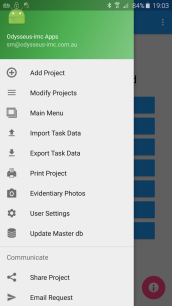Yet another reporting tool for the Victorian Water Industry. The Department of Treasury and Finance has, in its wisdom decided to introduce the DTF Asset Management Accountability Framework (AMAF). The framework was introduced through publication in February 2016 and updated, again through publication in June 2016. The framework will not apply to financial assets.
The objective of the AMAF is to ensure that Victoria’s asset portfolio is managed efficiently and effectively. It achieves this by measuring the water authority’s ability to respond and assess to key asset management questions thereby identifying the authority’s capability in applying asset management processes, systems, data supported by documentation.
The AMAF is consistent with the ISO55000 series and will not be too dissimilar to the National Asset Management Accountability Framework (NAMAF) used by local government to assess asset management capability across Australia.
Brief history of NAMAF
The NAMAF started its day as part of the Victorian STEP program. As the STEP program evolved so too did the framework. The intent was that a local government body could undertake a self-assessment of its asset management capability supported by external auditors to identify improvement programs to improve their asset management. Over time, with 6 and 12 month reviews the council could then demonstrate asset management improvement.
This STEP program developed into the advanced asset management framework and then when a national push to improve asset management became the focus, the NAMAF evolved. The focus on the NAMAF is to firstly demonstrate core then advanced asset management capability. The NAMAF as it stands has been in place in local government since 2009.
The Department of Treasury and Finance in Victoria will roll out a similar framework with some modification for the water sector to achieve the same, if not better outcomes than the NAMAF. The process will be similar together with the series of questions. A major difference however is the requirement for the water authority to report its capability and compliance in its annual report.
The timing of the implementation of the framework is as follows:
- First reporting in annual reports around September 2018 with compliance as of 30 June 2018
- 2015-16 agencies will begin transitioning
- 2016-17 assessment of compliance with the AMAF required with a trial reporting to the DTF
- 2017-18 assess compliance with the AMAF, incorporate in annual report, verify compliance and identify deficiencies including reasons for the deficiencies. Compliance assessed as at30 June 2018.
- 2018-19 and ongoing, as per 2017-18
It is intended that an online tool be managed by the DTF for water authorities to use to assess compliance.
An audit committee or alternative review process should be involved in the verification of the self-assessment process and should take a lead role in governance and oversight matters
At this time the self-assessment of the asset management maturity will be undertaken at least every three years.
References
Asset Management Accountability Framework, Department of Treasury and Finance, February 2016
Asset Management Accountability Framework Guidance material, Department of Treasury and Finance, updated June 2016


